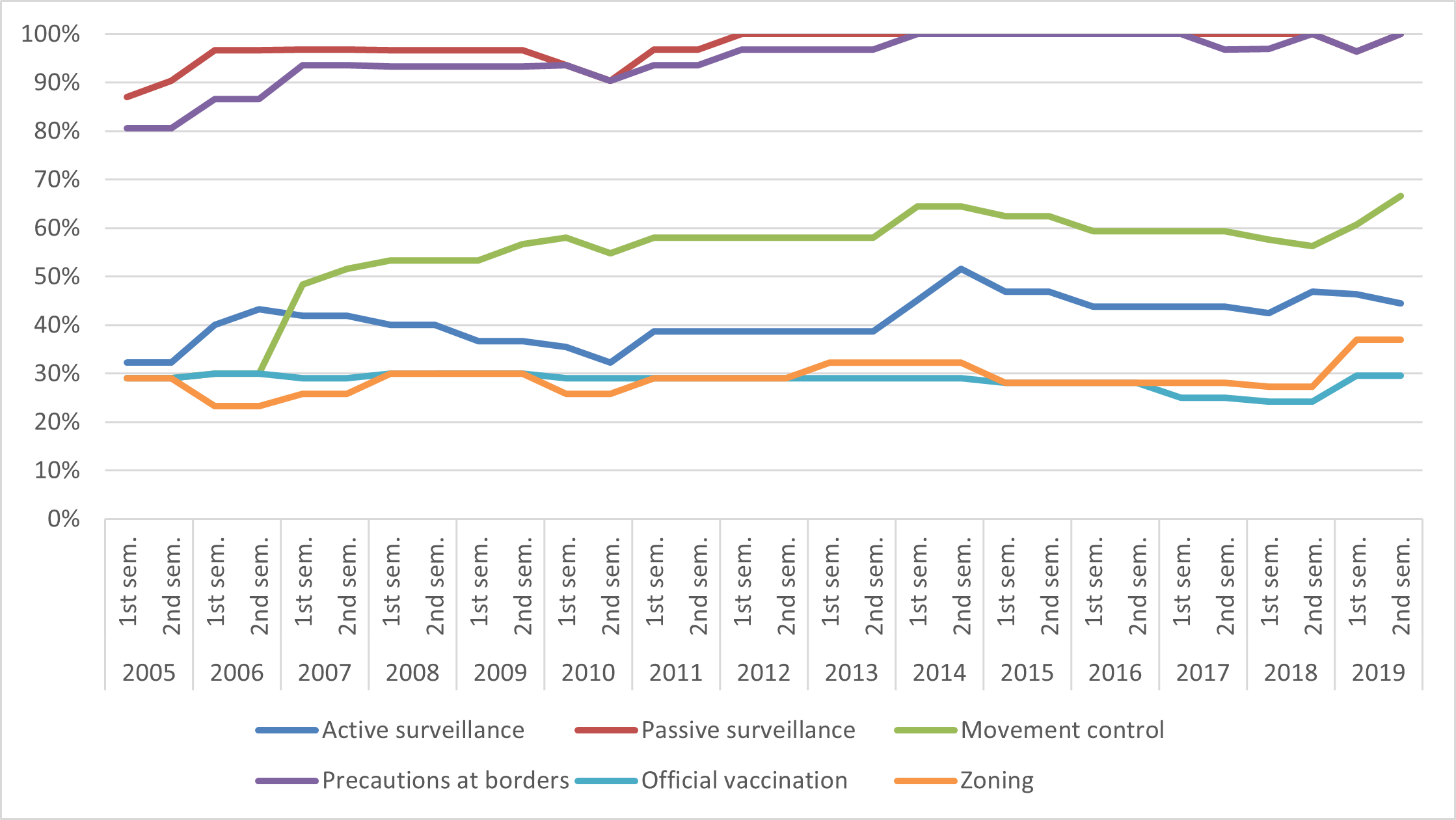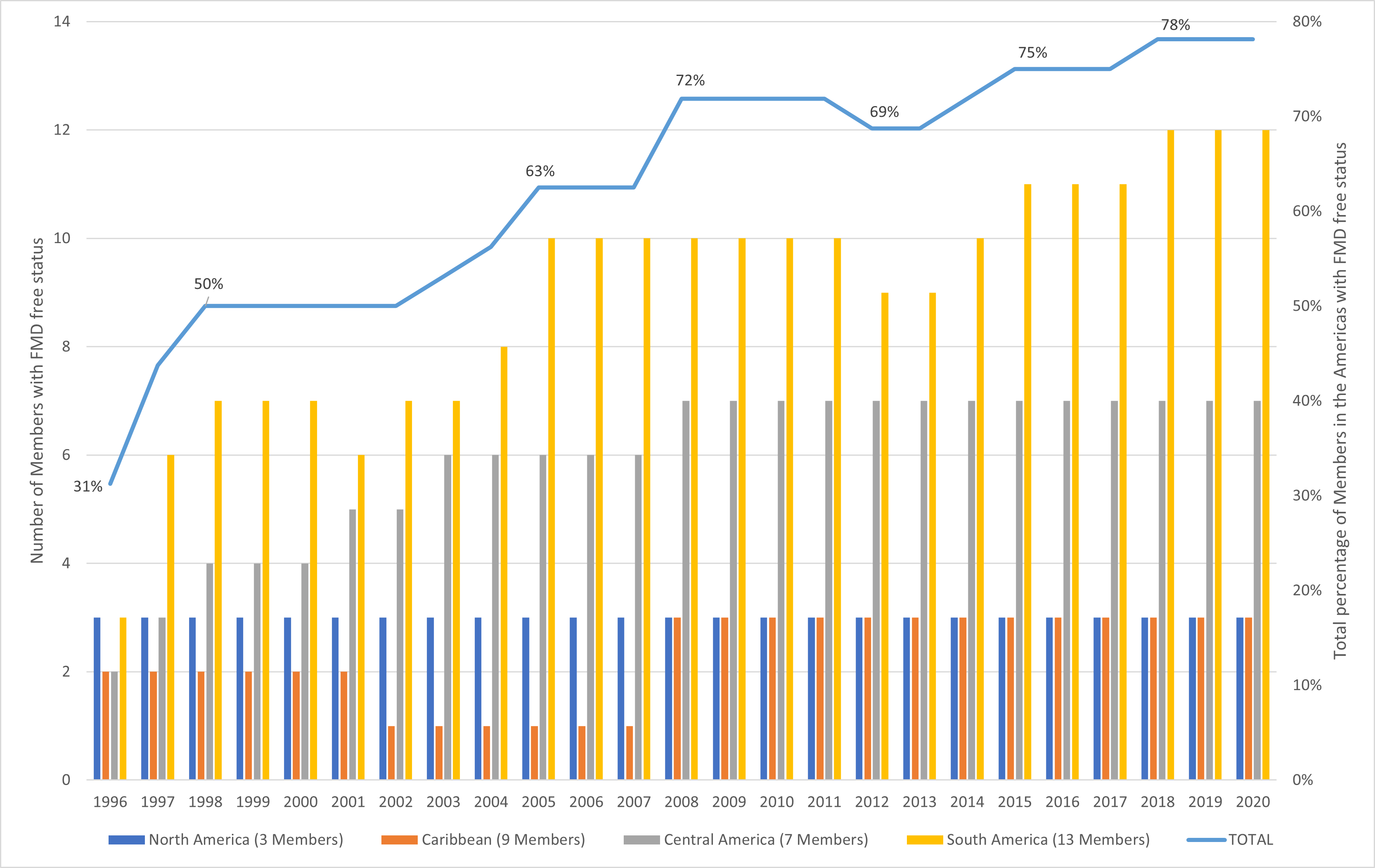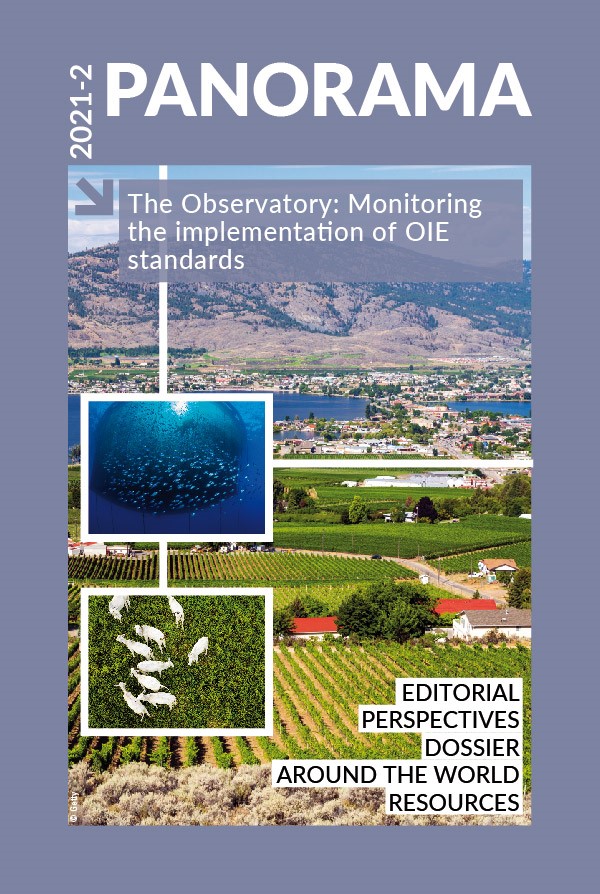Dossier Posted on 2021-12-14 10:08:00
Implementation of the OIE standards on FMD in the Americas
Exploring the data: developing a better understanding of the implementation of OIE standards
Keywords
Authors
Lina Awada(1), Paolo Tizzani(1) & Aurelio Cabezas(2)
(1) World Animal Health Information and Analysis Department, World Organisation for Animal Health (OIE).
(2) Status Department, World Organisation for Animal Health (OIE).
The prototype aimed to monitor the implementation of OIE standards on foot and mouth disease (FMD) in the Americas. This scenario was selected because of the history and engagement of the region in controlling this disease by applying the OIE standards.
Two aspects of the implementation of the OIE standards were analysed, based on various sources of information:
- How well the OIE standards on the quality of Veterinary Services and disease surveillance, notification, and control were implemented
- The impact of the OIE standards on animal health and international trade.
This article focuses on the implementation of selected surveillance and control activities, based on the World Animal Health Information System (OIE−WAHIS), and on the number of OIE Members with officially recognised FMD-free status from 1996 to 2020.
Figure 1 below shows the percentage of Members in the region that implemented selected surveillance and control measures in domestic animals, between 2005 and 2019. The measures most often applied were passive surveillance and precautions at borders (around 95%, on average). Active surveillance (average: 41%) and movement control (average: 54%) came next. Zoning and official vaccination were applied by 29% of Members on average.

Figure 2 below shows the increasing number of disease-free Members in the region between 1996 and 2020. All Members in North and Central America and the Caribbean, and 90% of Members in South America, achieved FMD-free status in 2020. Nevertheless, suspensions of that status have occurred through the years.

This prototype approach can be extrapolated to other diseases and regions by applying robust and global methodology to the relevant data sources. Such analyses provide inputs for targeting capacity-building activities, as part of regional or global strategies. In the course of its digital transformation strategy, the OIE aims to improve the quality of the data collected and their alignment with evolving standards, and to better connect the existing databases within the OIE, for improved synergies.
https://doi.org/10.20506/bull.2021.2.3285










